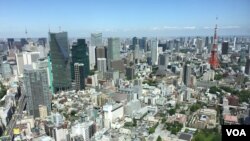Spring comes earlier to dense cities, and while that might be great for city gardeners and outdoorsy types, it might be bad for native birds and insects.
Writing in the journal Environmental Research Letters, researchers from the University of Wisconsin-Madison say plants in urban areas begin budding earlier in the spring than their suburban counterparts because cities act as “heat islands” due to the amount of concrete and pavement and relative lack of vegetation.
According to the U.S. Environmental Protection Agency, the “annual mean air temperature of a city with 1 million people or more can be 1 to 3 degrees Celsius warmer than its surroundings.”
The observations were made in Madison, Wisconsin, thermometers placed around the city. The measurements were then compared to satellite imagery showing when vegetation began to turn green.
They found that the urban growing season was not lengthened uniformly in the city. For example, in the areas with the highest density, the growing season was extended by a week, but parks had relatively normal growing season length.
"With a better understanding of the impacts of urbanization on vegetation, we can create more sustainable cities that behave more similarly to the natural areas they have replaced," says lead author Samuel Zipper, of the UW-Madison Water Sustainability and Climate Project, a program funded by the National Science Foundation. "Every little bit of greenness counts within a city."
But using satellite imagery has drawbacks, as researchers said the types of plants need to be accounted for. For example, grassy lawns in the suburbs became green before trees in urban areas, even though the temperatures were higher in the city.
"The degree to which the potential growing season gets longer is related to urban density, but the actual growing season depends on what is growing on the ground," Zipper said.
Researchers say that the earlier urban spring could have “cascading effects on urban ecosystems that may be harmful to birds, butterflies and other wildlife in search of food and habitat.”
While the study only examined one city, the researchers say it furthers understanding about how urban development can influence a variety of natural cycles such as plant growth and water and carbon cycles.









